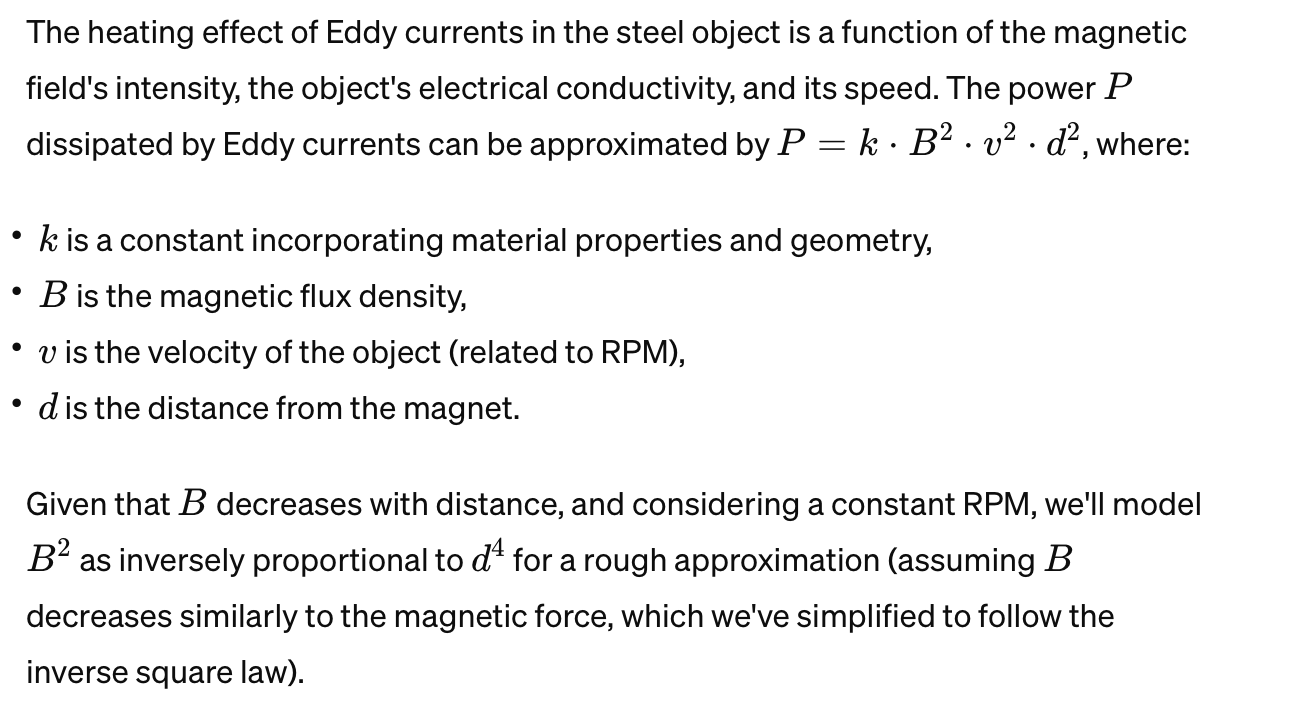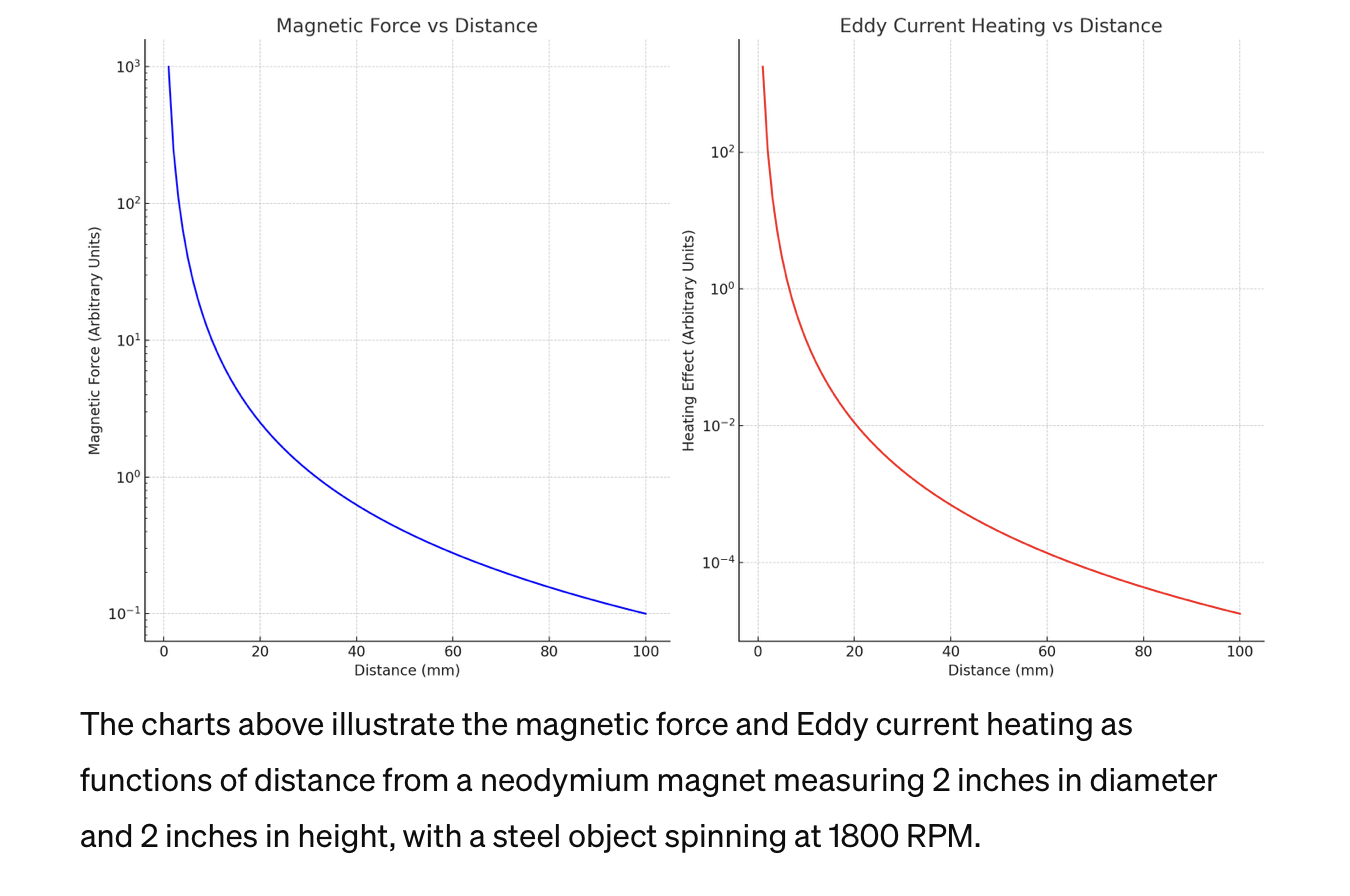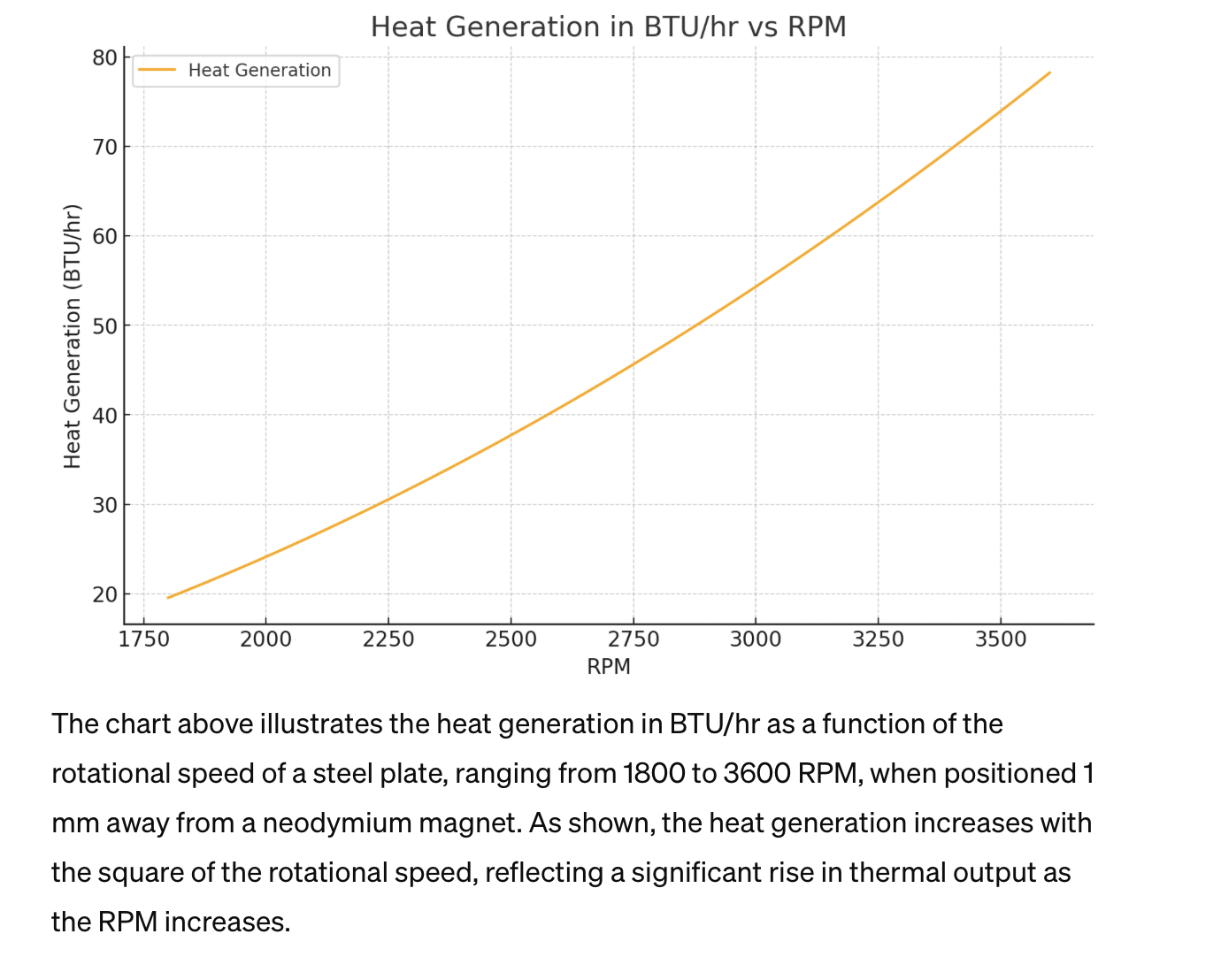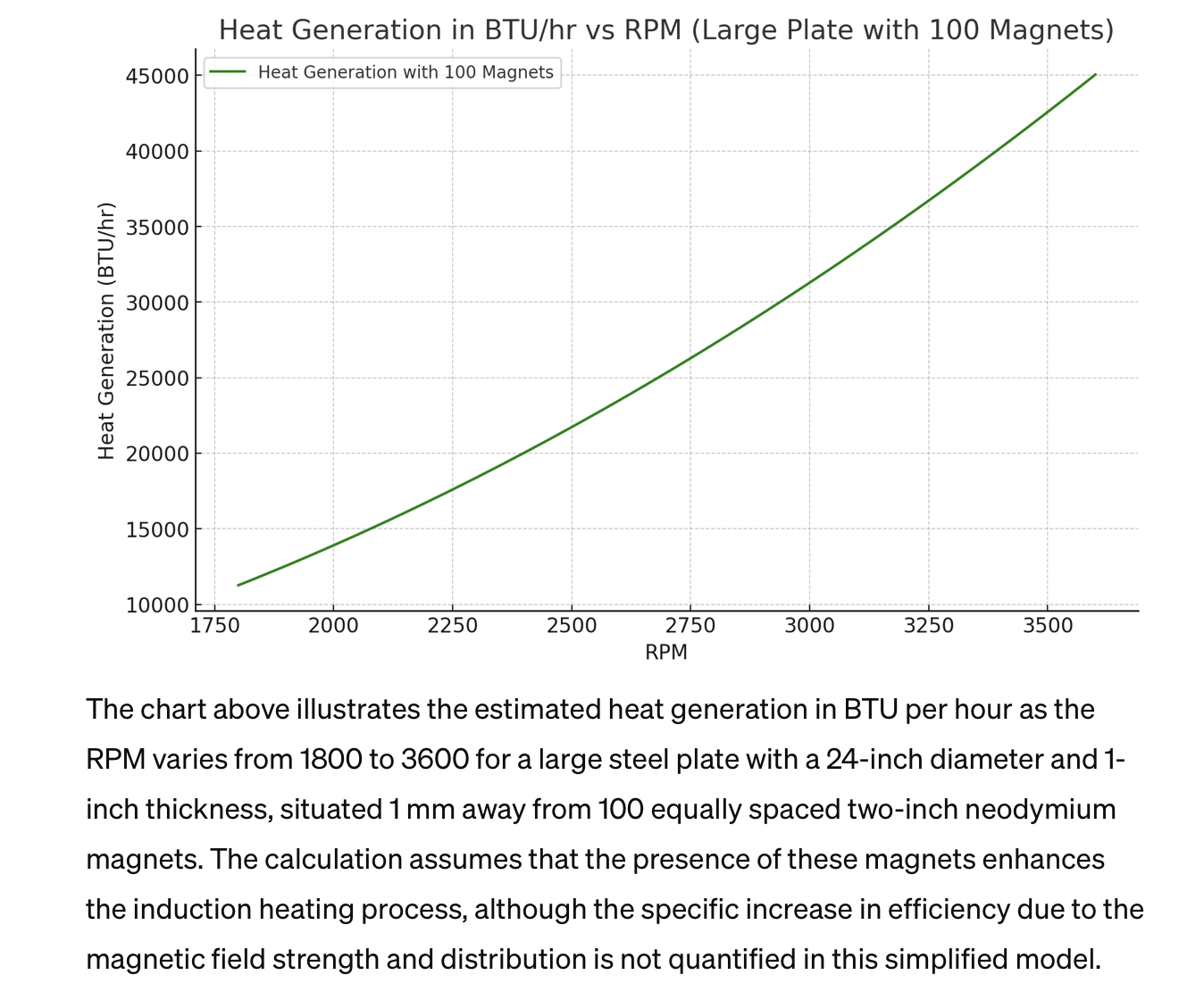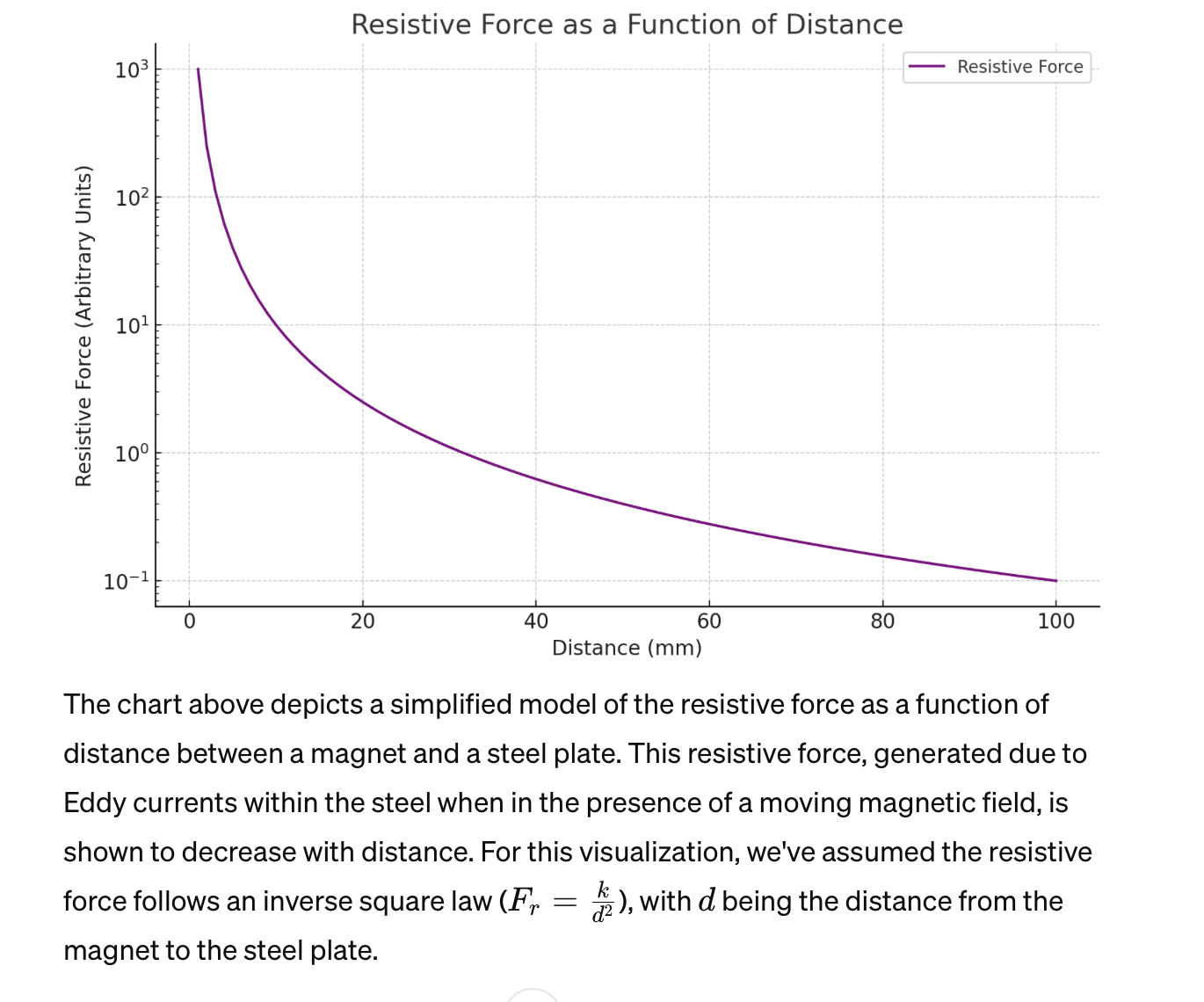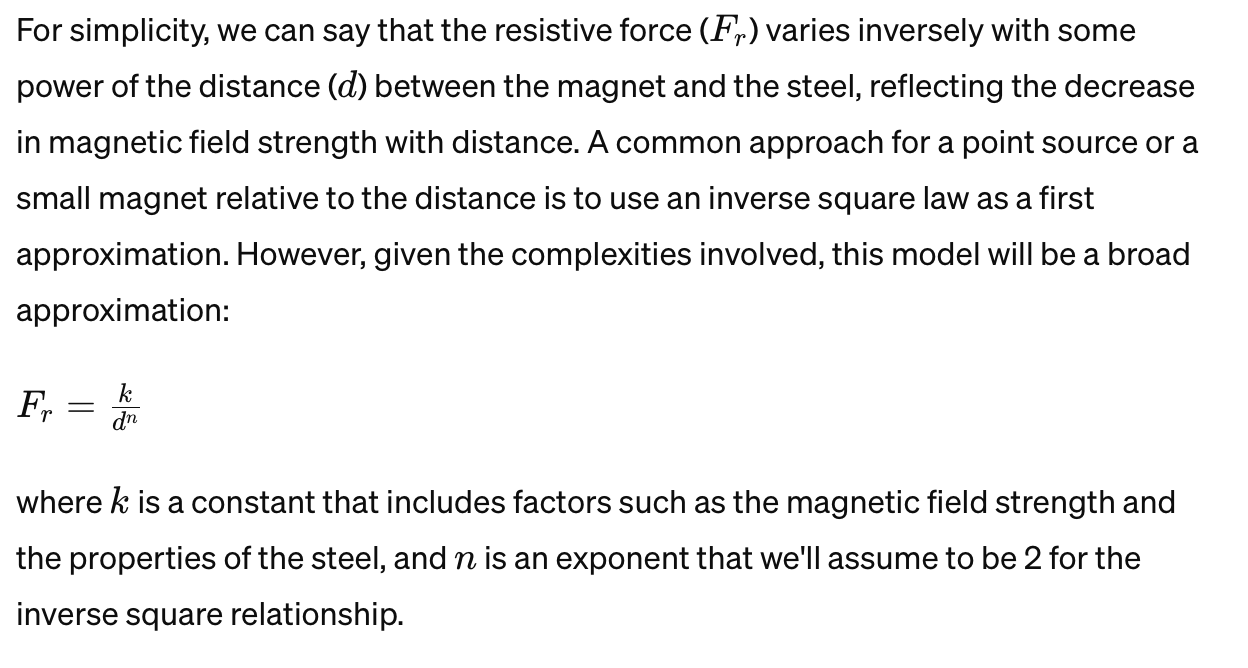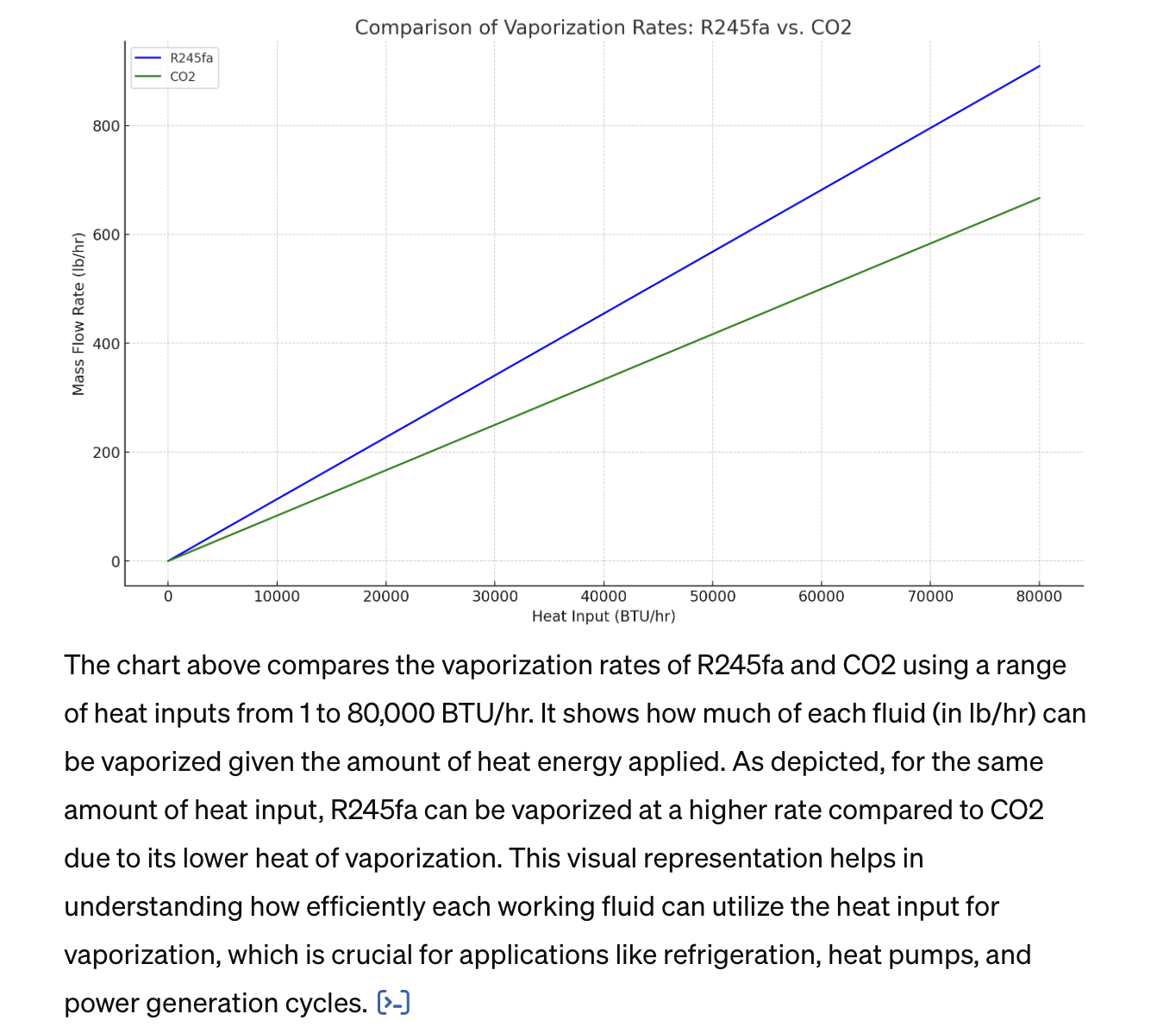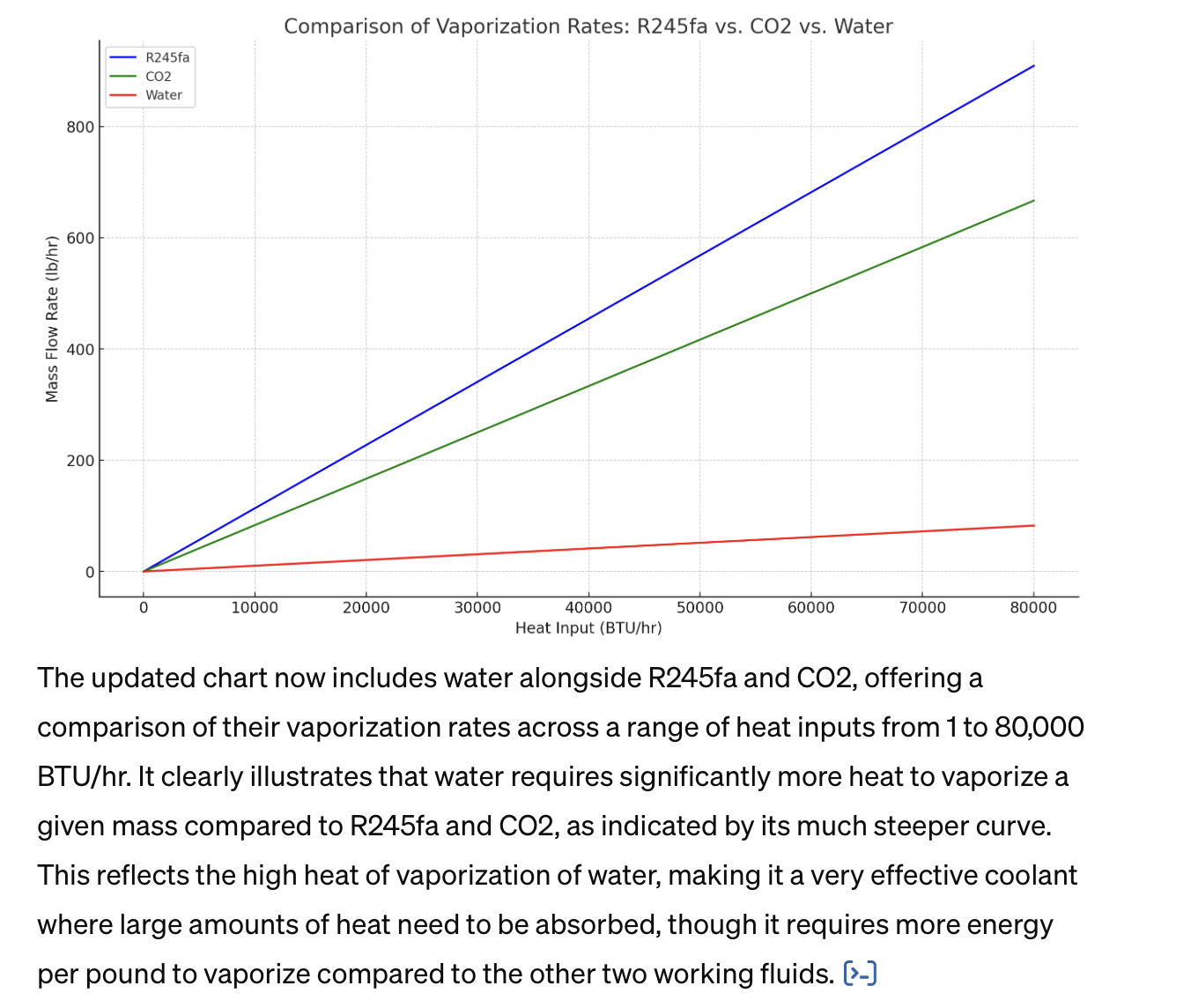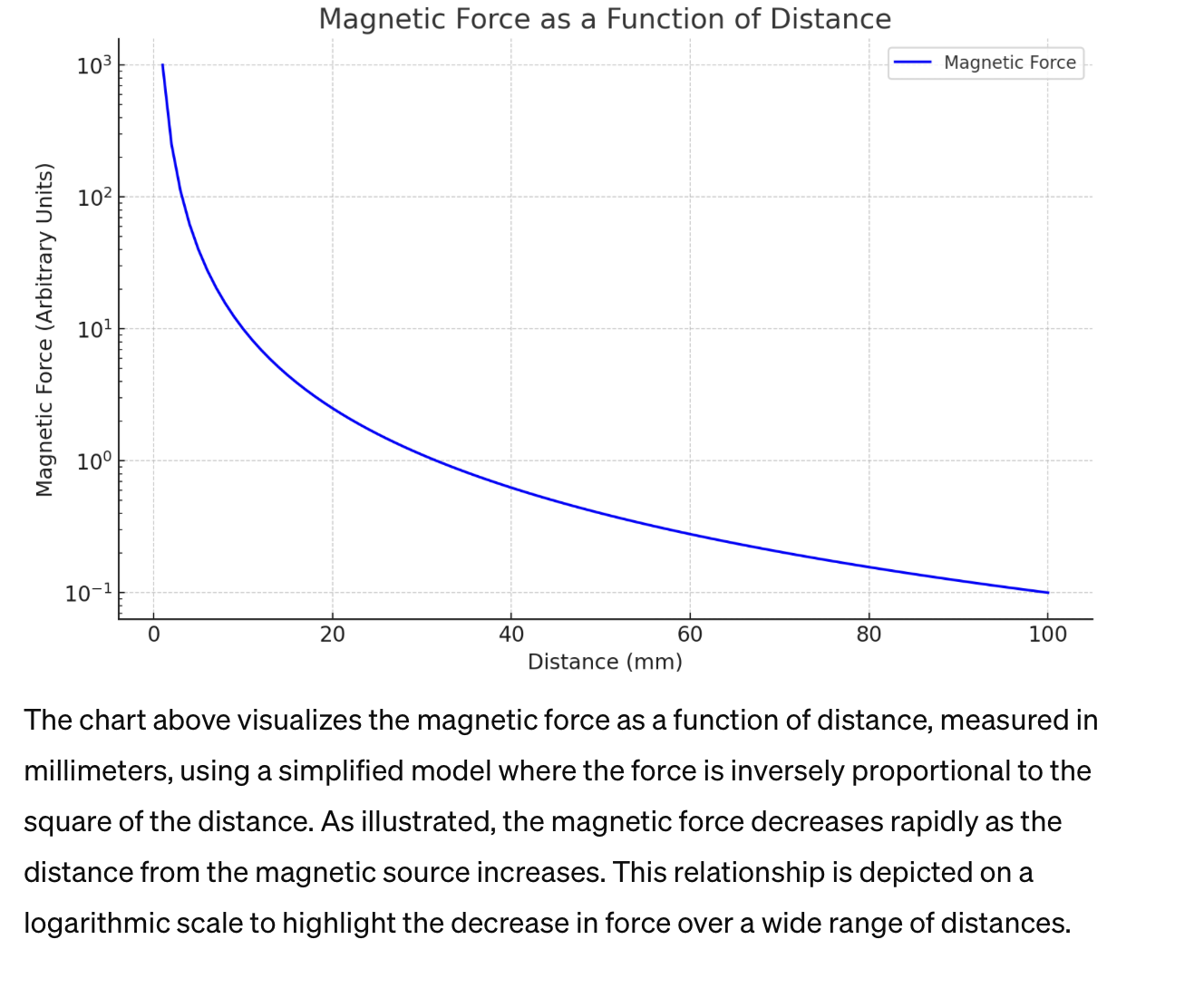
Chart Magnetic Force
To chart the magnetic force as a function of distance, we'll need to consider a typical relationship between magnetic field strength (which correlates with magnetic force) and distance from the magnet. The magnetic field strength decreases with the square of the distance from the source, according to the inverse square law for a point source. However, for a practical application involving Eddy currents and the induction heating of steel, the exact relationship can vary based on the configuration of the magnets and the coil, as well as the shape and size of the steel object.For simplicity, let's model the magnetic force (F) as inversely proportional to the square of the distance (d) from the magnet, which can be represented as \(F = \frac{k}{d^2}\), where \(k\) is a constant that includes the magnetic permeability of the medium, the magnet's strength, and other factors relevant to the setup.Let's chart this relationship for distances ranging from 1 mm to 100 mm to visualize how magnetic force decreases as we move away from the magnet. This simplification will help illustrate the general trend, though actual results may vary with specific experimental setups.The chart above visualizes the magnetic force as a function of distance, measured in millimeters, using a simplified model where the force is inversely proportional to the square of the distance. As illustrated, the magnetic force decreases rapidly as the distance from the magnetic source increases. This relationship is depicted on a logarithmic scale to highlight the decrease in force over a wide range of distances.This model provides a conceptual understanding of how the intensity of the magnetic field impacts the efficiency of heating steel via Eddy currents. In practical applications, optimizing the distance between the steel and the magnet or coil is crucial for achieving efficient heating. This chart serves as a foundational guide for further experimental designs and optimizations in the development of magnetic-based heating elements.

